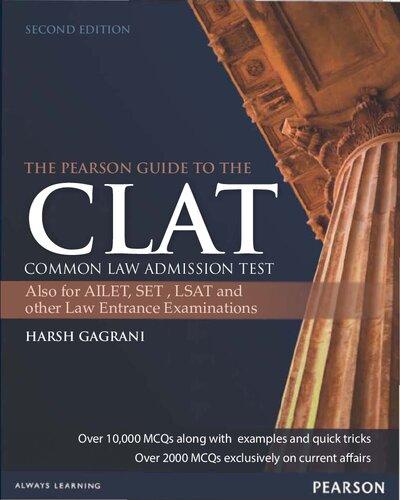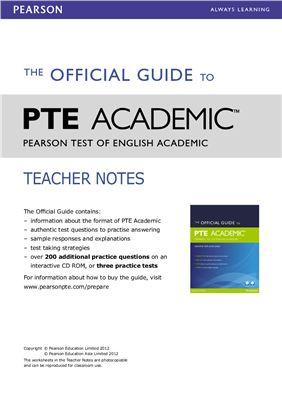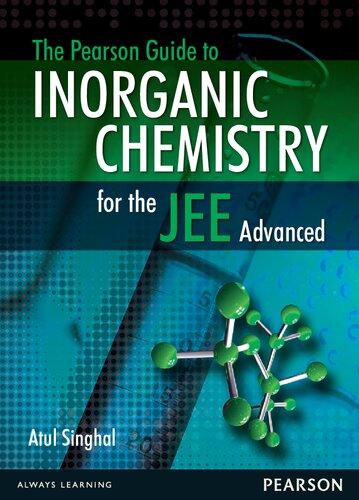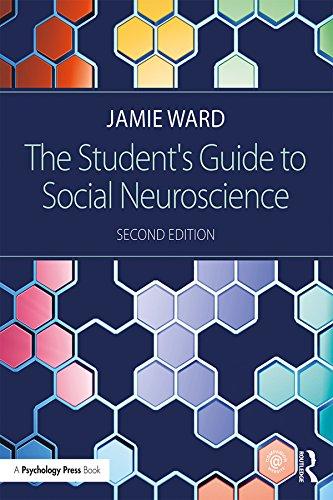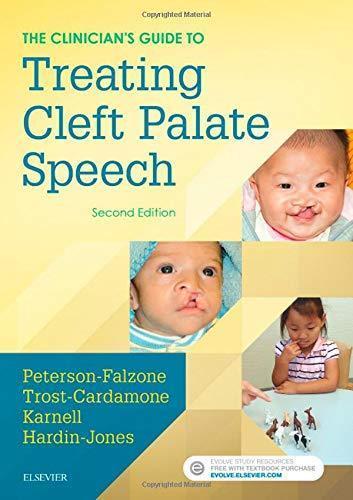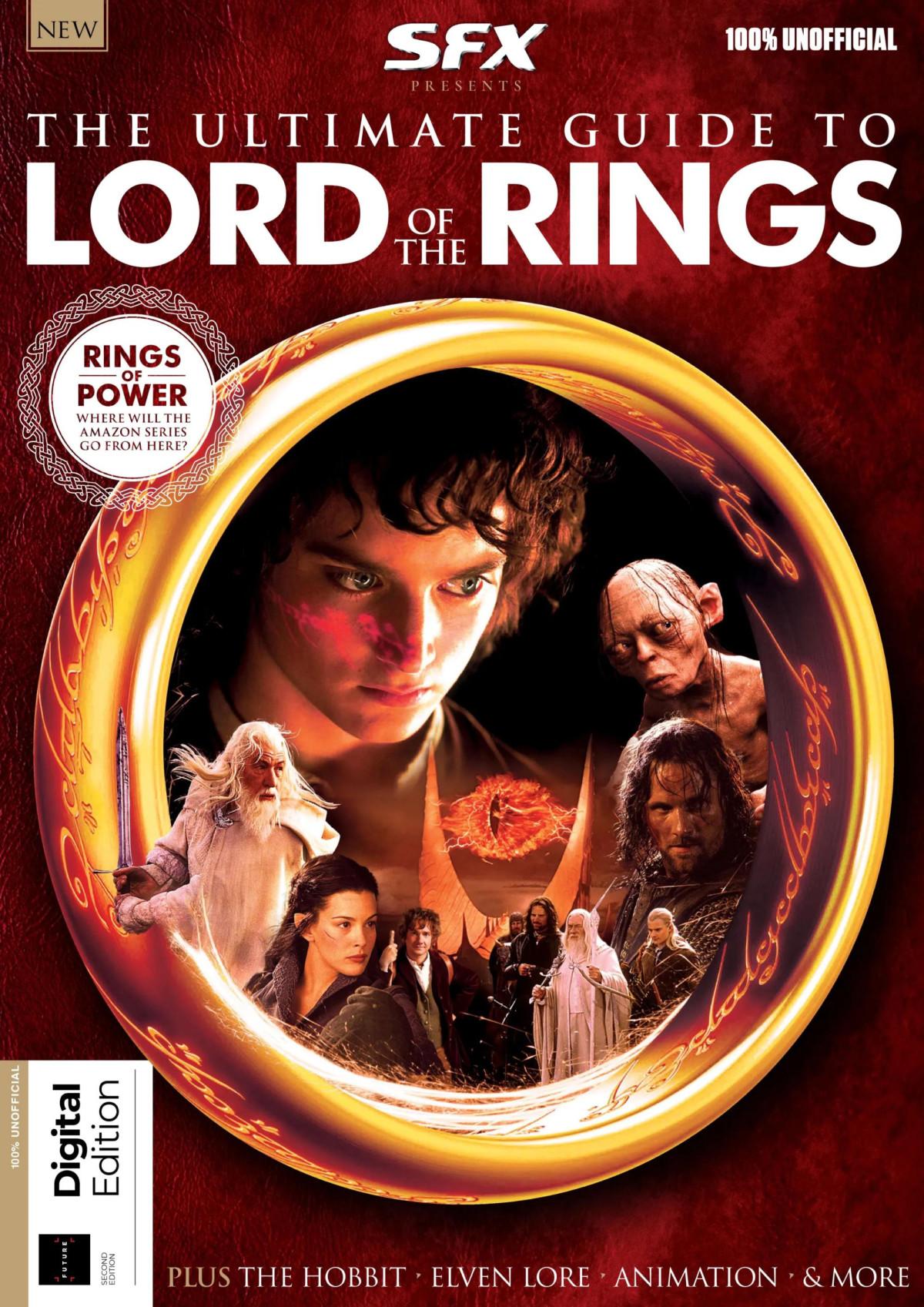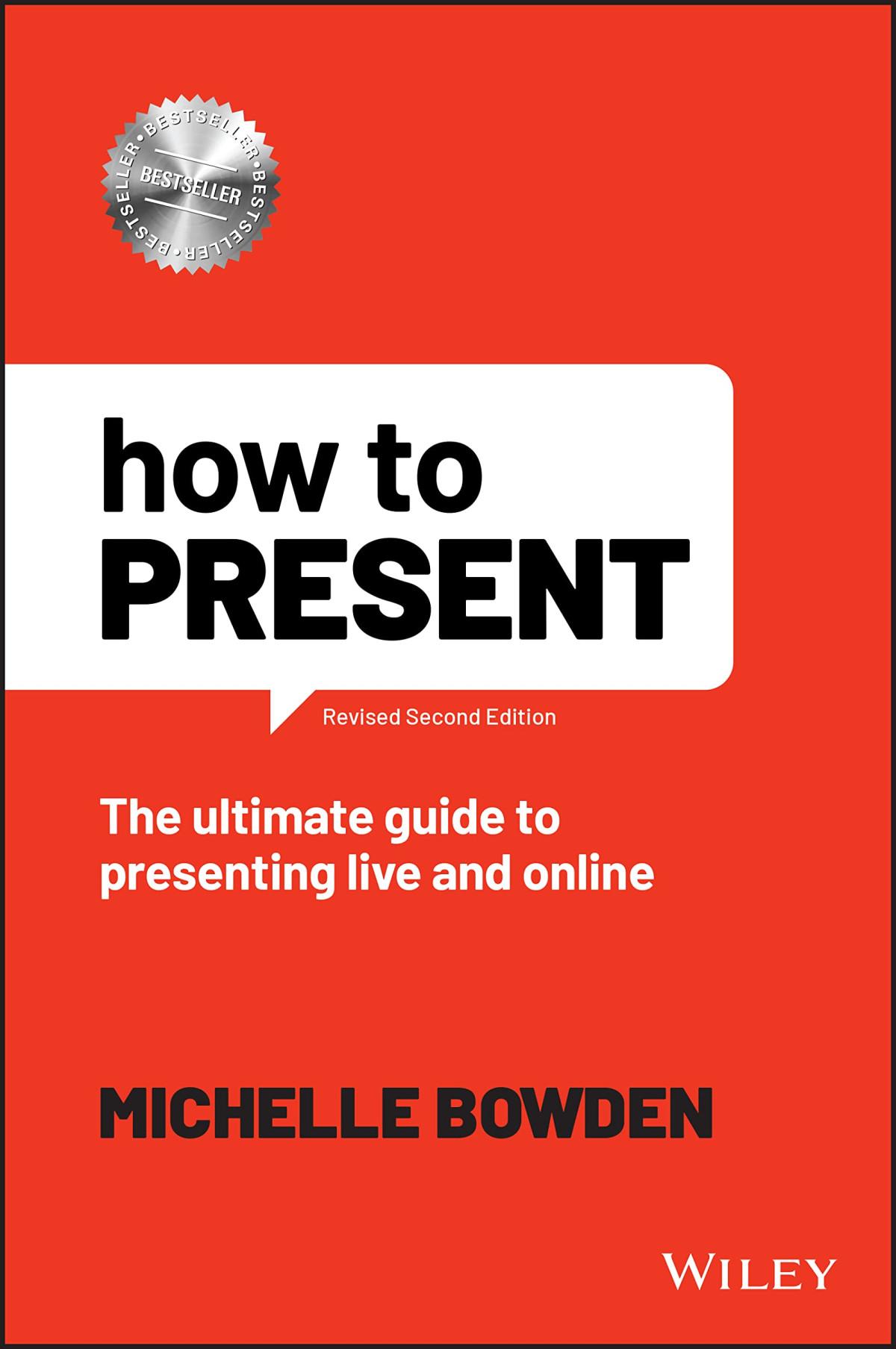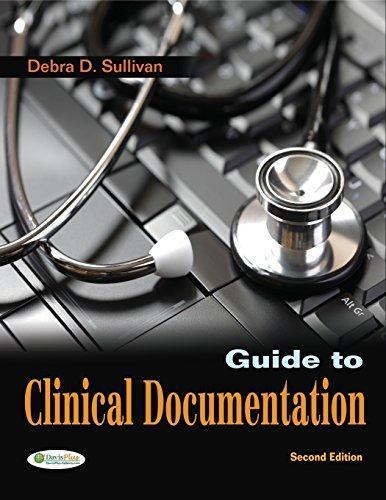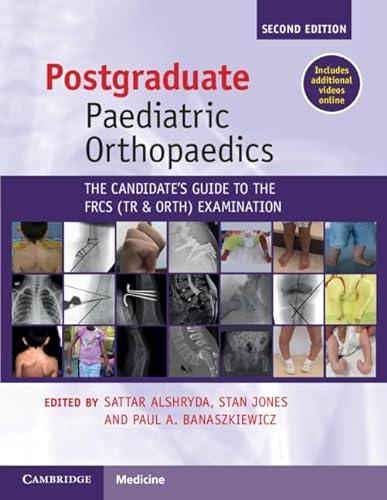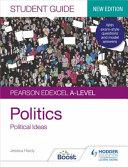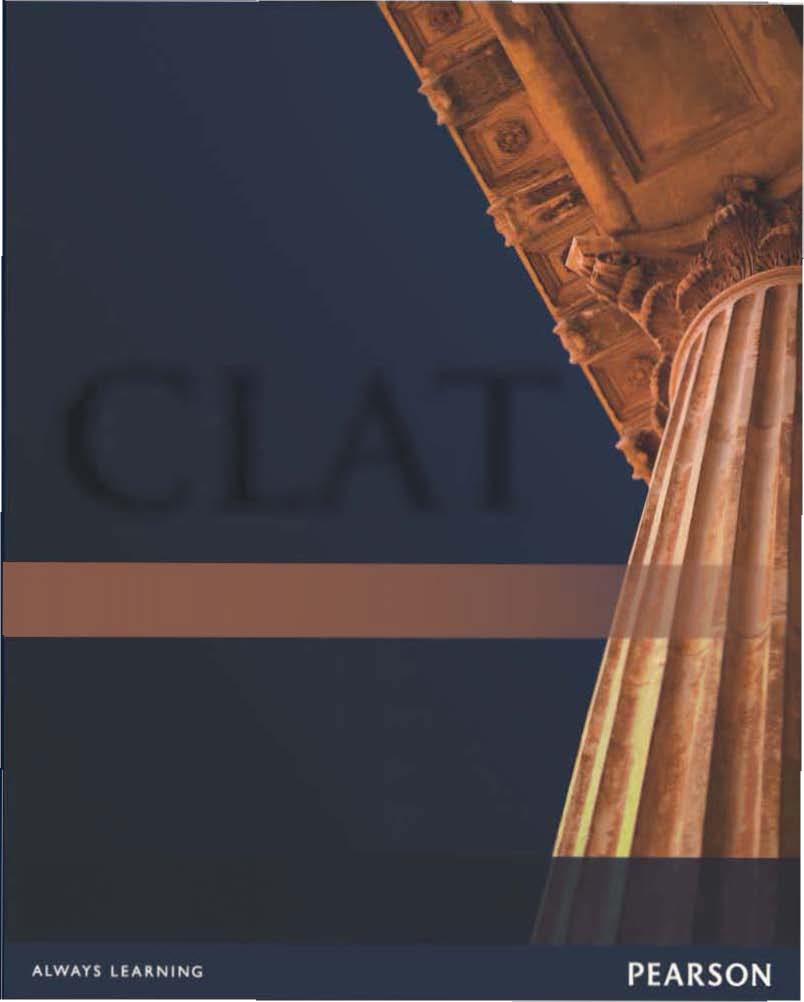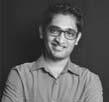Chapter 2 Preliminary Test – 1 (CLAT Pattern)
Total Questions: 100
Total Time: 60 minutes
Negative marking: Yes (0.25 marks per wrong answer)
Section i – engliSh
Directions: Read the following passage carefully and answer the following questions.
Passage: What inspired me to write this in the first place was the recent renovation drive carried out in Hazratganj. It rang a bell. It reminded me of how special our city is. It reminded me that it is truly ‘City of Nawabs’.
Every year we watch the Republic Day parade with unprecedented pride and hope for a better future ahead for our country. We discuss issues for the greater good—poverty, illiteracy, health and hygiene, nuclear power and what not? But have we ever glanced at the grass root level. Have we ever seen where our city stands at present. This time around when I went to Nakkhas (and Chowk area) and Nazirabad—kebabs, biryani, kulfi—a colourful palette of some of the best ‘food’ platters in Lucknow, I looked at them and realized just how beautiful and rich they are. Yet, they remain shrouded in the haze of an upcoming metropolitan culture and beautification.
There are shopping malls and high-end brands that are swarming thees place, but the true jewels of the city lie in the nooks and crannies of which many are blissfully ignorant. Even the traditional ‘chikan’ embroidery and ‘zardozi’ lie in obscurity and very few people care about preserving the rich heritage of the city. Modernization can neither be stopped nor should it be, but at the same time, the cultural values of our cities must be protected as they form a part of our identity.
This may seem like just another sermon on preserving our tradition and culture and mind you, it is somewhat that—just that we need to consider and ponder over this, not as a ‘preachy article’ but as an awakening—to wake up and smell the coffee. We need to be beacons of light and the frontrunners of positive change in society.
1. What do you gather about the author from the passage?
(a) Passion for the city (b) Orthodox (c) Modern (d) Self-indulgent
2. Which of these aspects about the city has not been mentioned in the passage?
(a) Food (b) Craft and arts
(c) Legacy (d) Language
3. Which is the city being referred to in the passage? (a) Delhi (b) Lucknow (c) Bhopal and Lucknow (d) Old Indian cities
4. Is the author against changes in the city (on the basis of information given in the passage)?
(a) Yes (b) No (c) Can not say (d) Balanced view
5. What does the expression ‘nooks and crannies’ mean?
(a) Corners (b) Obscure
(c) Remote (d) Old
6. What prompted the author to write this article? (a) Republic Day Parade (b) Eating in the city (c) Reconstruction of Hazratganj (d) Patriotism
7. What best describes the meaning of ‘wake up and smell the coffee’?
(a) Awaken from sleep (b) Pay attention to (c) Argue against (d) Form an opinion
8. What does ‘beacon’ mean in the light of the passage? (a) Lighthouse (b) Warning signal (c) Source of guidance (d) None of the above
Directions: Choose the idiom from the options given that best fits the meaning given in the question:
9. Entering into a conflict (a) Break a lance with (b) Fools rush in where angels fear to tread (c) Into the wild (d) None of the above
10. Take part in something which is likely to fail (a) Slap dash (b) At a canter (c) Skate on thin ice (d) None of the above
11. Worthless person
(a) A trump (b) A black sheep (c) To be born with a silver spoon in one’s mouth (d) None of the above
12. To go to bed
(a) Hit the road (b) Take the cake (c) Hit the sack (d) Drop a dime
Directions: The following questions consist of jumbled up parts of a sentence which need to be arranged in the proper sequence. The list of options contains the correct sequence which needs to be identified using principles of grammar and logical deduction.
13. A. The boy stood frozen
B. On the lifeless form
C. Of his mother’s still body
D. With shock, with his eyes transfixed
(a) CDBA (b) DBAC (c) ACDB (d) ADCB
14. A. The entrance exam paper
B. Rohan missed out
C. Due to paucity of time
D. On an entire section of (a) BDCA (b) DBAC (c) CDAB (d) BDAC
15. A. Personal affairs is my concern B. The only reason behind C. My interest in your
D. For your well being (a) BCAD (b) DACB (c) BCDA (d) BDCA
16. A. The point of view of your B. Brother or be prepared C. To face the consequences D. Either try to understand (a) ADCB (b) DABC (c) DACB (d) ABCD
Directions: The following questions based on analogies require the identification of the common relation between the main set and the given options. You are to select the appropriate option which is in line with the relation from the given list using the meaning of the words and logical deduction.
17. Wheat : Threshing
(a) Rice : Crushing (b) Milk : Pasteurization (c) Dog : Grooming (d) Art : Painting
18. Anger: vice (a) Compassion : virtue (b) Resentment : virtue (c) Empathy : vice (d) Joy : virtue
19. Ram Mohan Roy : Syed Ahmed Khan : Dayanand Saraswati : Reformers
(a) Alamgir : Jahandar Shah : Farrukhsiyar : Mughals (b) Dolphin : Platypus : Alligator : Mammals
(c) Wisdom : Insight : Acumen : Knowledge (d) Resistance : Confrontation : Altercation : Surrender
20. Sugar : Tea leaves : Ginger : Tea
(a) Mandarin : Indonesian : Arabic : Languages
(b) Cuba : Uganda : Namibia : Africa
(c) Coffee powder : Water : Salt : Coffee
(d) Lemon : Water : Sugar : Tea
Section ii – logical ReaSoning
Directions: In the following questions, a statement is given followed by two possible assumptions. Choose:
(a) If assumption I is implicit
(b) If assumption II is implicit
(c) If either I or II is implicit
(d) If neither I nor II is implicit
(e) If both I and II are implicit
21. Statement: “For an ever glowing skin, use Fair and Healthy”– An advertisement.
Assumptions:
I. People like other people with an ever glowing skin.
II. The advertisement will help in increasing the sales.
22. Statement: “Readers are leaders” – A quote.
Assumptions:
I. Not all readers are leaders but all leaders are readers.
II. Not all leaders are readers but all readers are leaders.
23. Statement: One should make notes from the newspaper everyday for an efficient preparation of current affairs.
Assumptions:
I. One cannot prepare for current affairs efficiently without reading newspapers.
II. Making notes helps in an efficient preparation of current affairs.
Statement: ‘I think hockey should no more be our national game. Games like cricket and shooting are bringing us more laurels and international popularity’ –A tells B
‘Are you serious? India was once the hockey powerhouse and has won 8 gold medals in Olympics, with half a dozen world records’ – B replies to A.
24. What are the assumptions on which A relies?
I. The national game of India can be changed. II. The national game of India should be decided on the basis of international recognition it is bringing.
25. What are the assumptions on which B relies?
I. The game which has won more medals in Olympics deserves to be the national game of India. II. A is not serious when he says that hockey should not be the national game of India.
Directions: Read the given passages and answer the question(s) that follow.
26. In a recently released survey, it was found that in 76% of the cases, the drivers of the cars which met with an accident were either drunk or talking on their mobile phones. Thus people can avoid accidents in majority of the cases by not driving when they are drunk or talking on their mobile. The central assumption of the argument is that:
(a) The driver of the car carrying others who are either drunk or talking on their mobile phones would also not be drunk, or talking on his mobile phone.
(b) In the rest 24% of the cases covered in the survey, the driver was driving within permissible limits.
(c) Seatbelts and airbags play no major role in avoiding fatal accidents.
(d) The cars which met with an accident whose drivers were either drunk or talking on their mobile phones, were within the permissible speed limits.
27. The Delhi Metro Rail Corporation (DMRC) soon wants to automate the whole system of ticket issuance, as well as baggage checks by bringing in machines to do the job, and wants to curtail the staff strength to save costs. The DMRC assumes that:
(a) Automated ticket issuance and baggage checks have been successfully running in various countries.
(b) Personal service of the staff is not required for the job of issuing tickets and checking bags.
(c) Cost cutting would necessarily lead to increase in profits.
(d) The costs associated with automating the job of ticket issuance and baggage checks would be lesser than that of keeping staff for the same.
28. A real artist is not only the one who creates beautiful pictures and brilliant stories. He also raises the bar by forever challenging status quo. Furthermore, a real artist doesn’t even care for credit. All he cares about is his work and contribution to art. However, in today’s world, these traits
barely matter as nothing succeeds without advertising, marketing and branding.
The statement above logically conveys which of the following?
(a) It is virtually impossible for real artists to succeed in today’s world without advertising, marketing and branding.
(b) Real artists should invest in advertising, marketing and branding to be really successful, as they also have other traits which put them on higher footing than the others.
(c) People who succeed in today’s world are not real artists but only a reflection of them.
(d) Real artists shouldn’t bother about advertising, marketing and branding and should just care about their contribution to the world.
29. If Mary completes the formalities, she might get admission in a reputed law college. Mary was able to complete the formalities.
If the above statement is correct, which of the following must also be correct?
(a) She got admission in a reputed law college.
(b) She might have gotten admission in a reputed law college.
(c) She took external help in completing the formalities.
(d) Both (b) and (c) are correct.
Directions: In each of the questions below are given two statements followed by two conclusions numbered I and II. You have take the two given statements to be true even if they seem to be at variance with commonly known facts. Read the conclusions and then decide which of the given conclusions logically follows from the given statements disregarding commonly known facts.
Give answer:
(a) If only conclusion I follows.
(b) If only conclusion II follows.
(c) If either I or II follows.
(d) If neither I nor II follows.
(e) If both I and II follow.
30. Statements
I. Some salaries are expenditures
II. Some salaries are savings
Conclusions
I. Some savings are salaries
II. Some expenditures are savings
31. Statements
I. Some chromes are not mozillas
II. All mozillas are IEs Conclusions
I. Some chromes are not IEs
II. Some mozillas are IEs
32. Statements
I. A is B II. B is C Conclusions
I. A is C II. C is A
Directions: Fill in the blanks with the appropriate option.
33. Statements I. II. No Persians are Africans Conclusion
I. Some Africans are not Persians (a) All Persians are Africans (b) Some Persians are Africans (c) Some Persians are not Africans (d) Not required
34. Statements I.
II. All Mirrors are Glasses Conclusion
I. Some Tables are Glasses
(a) All Tables are Mirrors
(b) Some Tables are not Mirrors (c) Some Mirrors are not Tables (d) None of the above
35. Statements
I. No Pens are Books II. Conclusion
I. Some Books are not Pens
(a) No Books are Pencils
(b) No Books are Pens
(c) All Books are Pens (d) Not Required
Directions: In the question below is given a passage followed by several inferences. You have to examine each inference separately in the context of the passage and decide upon its degree of truth or falsity. Mark answer:
(a) If the inference is definitely true.
(b) If the inference is probably true.
(c) If the data is inadequate.
(d) If the inference is probably false.
(e) If the inference is definitely false.
Passage: Reform also brought with it a strange reinvention of the very meaning of the concept of ‘reform’ itself ‘Land reform’ now meant the facilitation of transfer of land to the rich and the new breed of land developers. The passage of the Special Economic
Zone (SEZ) Act symbolized this. ‘Labour reform’ meant the dismantling of labour protection laws. Government job openings were reducing, especially at the bottom end, and while the value of education for all was clearly a felt need by everyone, a large numbers of people at the base of the economic pyramid felt the shrinking of responsibility and shirking of accountability of agencies of the State.
36. The author is pointing out to the 1991 reforms, when the economy was opened up to foreign companies.
37. The Special Economic Zone (SEZ) Act helped the rich more than the poor.
38. The author asserts that the reforms now are essentially for the protection of the rich, and not for the upliftment of the poor.
39. Labour reforms are helping the labour class realize and protect their basic rights.
40. Though government jobs has been reducing, the new age reforms has helped the private sector generate more jobs and thus increase employment.
Section iii – geneRal Knowledge/ cuRRent affaiRS
41. Which canal, opened in 1869, is nicknamed ‘Highway to India’?
(a) Panama (b) Suez (c) Alappuzha (d) Bruges
42. RMS Titanic, a British passenger liner that sank in the Atlantic in one of the deadliest maritime disasters in history, was on its way to New York from:
(a) Singapore (b) Southampton (c) Halifax (d) Portsmouth
43. Besides the Kargil War, Operation Vijay is related to which other event?
(a) Invasion of the princely state of Hyderabad (b) Indian Annexation of Goa
(c) Capture of Siachen Glacier (d) Intervention in Maldives
44. The phenomenon of change in direction of a wave due to change in medium is referred to as:
(a) Coupling (b) Retraction
(c) Refraction (d) Rarefaction
45. Who was the first Managing Director of IMF?
(a) Christine Lagarde (b) IvarRooth (c) Camille Gutt (d) Rodrigo Rato
46. The UN Security Council has 5 permanent members – US, UK (English), Russia (Russian), France (French) and China (Chinese). The six official languages of the UN include the 4 mentioned in brackets, besides?
(a) Hindi and German (b) Arabic and Spanish (c) Hindi and Spanish (d) German and Arabic
47. Which leader made the first concrete proposal for establishing a framework for regional cooperation in South Asia, eventually leading to the creation of SAARC?
(a) ZiaurRehman (b) Rajiv Gandhi (c) King Birendra (d) Benazir Bhutto
48. Which was the only Congress session presided over by Mahatma Gandhi?
(a) Bankipur, 1912 (b) Lucknow, 1916 (c) Belgaum, 1924 (d) Nagpur, 1920
49. Kakori Train robbery took place in:
(a) Allahabad district – 1924 (b) Lucknow district – 1925 (c) Agra district – 1926 (d) Sahranpur district – 1927
50. What was so special about the monument Ibn Dinar constructed in 629 AD in Kerala?
(a) First walled city in India
(b) First marble monument in India
(c) First mosque in India
(d) First monument built by a Muslim ruler
51. Smiling Buddha was the codename given to India’s first: (a) Nuclear test explosion in Pokhran (b) Expedition to the South Pole (c) Stealth airplane (d) Naval attack on Pakistan
52. Arrange the following planets in terms of size in descending order.
1. Uranus
2. Saturn
3. Venus
4. Mars
(a) 1234 (b) 2134
(c) 1243 (d) 2143
53. Marie Curie, the first person in history to have won two Nobel Prizes, won them in which two fields?
(a) Physics and Chemistry
(b) Physics and Peace
(c) Chemistry and Physiology/Medicine
(d) Physics and Physiology/Medicine
54. In which Indian state did the modern game of Polo originate?
(a) Meghalaya (b) Rajasthan
(c) Manipur (d) West Bengal
55. Who was the 1st president of BCCI (Board of Control for Cricket in India)?
(a) N. Srinivasan (b) R.E. Grant Govan (c) Dr Maharaj Kumar (d) Anthony De Mello
56. With which sport is the Durand Cup associated? (a) Hockey (b) Golf
(c) Football (d) Cricket
57. The first Indian (and Asian) to swim the English channel was:
(a) AratiSaha (b) Nafisa Ali
(c) Mihir Sen (d) Sachin Nag
58. Which among the following is not one of the Soccer (Football) tournaments?
(a) OFC Nations Cup (b) Merdeka Cup
(c) European Nations (d) Rene Frank Trophy
59. The Commonwealth Games were held for the first time in India in:
(a) 2010 (b) 1974
(c) 1950 (d) 1998
60. Which Indian athlete has been nicknamed ‘The Payyoli Express’?
(a) Milkha Singh (b) JeevMilkha Singh
(c) P.T. Usha (d) IrrfanPathan
61. The capital city of Lord Rama was:
(a) Hastinapur (b) Lanka
(c) Ayodhya (d) None of the above
62. Who among the following was the son of Chandragupta Maurya?
(a) Bindusara (b) Ashoka
(c) Pushyagupta (d) Samudragupta
63. HieunTsang is said to have visited India during the reign of:
(a) Vikramaditya (b) Harshvardhana
(c) Chandragupta Maurya (d) Samudragupta
64. The founder of Slave Dynasty in India was:
(a) Muhammad Ghori (b) Qutb-ud-din Aibak
(c) Iltutmish (d) None of the above
65. Vasco Da Gama is said to have located Calicut in the year:
(a) 1590 (b) 1495
(c) 1498 (d) 1843
Section iV – legal aptitude/ReaSoning
Principles (for Questions 66 to 68):
I. Nothing is an offence which is done by a person who is or who by reason of a mistake of fact and not by reason of mistake of law in good faith believes himself to be, bound by law to do it.
II. Nothing is an offence which is done by a judge when acting judicially in the exercise of any power which is, or which in good faith he believes to be, given to him by law.
III. Nothing is an offence which is done by any person who is justified by law, or by reason of a mistake of fact and not by reason of a mistake of law in good faith, believes himself to be justified by law, in doing it.
IV. Nothing is an offence which is done by accident or misfortune, and without any criminal intention or knowledge in the doing of a lawful act in a lawful manner by lawful means and with proper care and caution.
Facts: Amrinder is a mason by profession. One day, when he is working with a hammer and chisel while standing on a ladder. The chisel slips from the wall and hits his co-worker, Lalu, who is standing near the ladder, on the head and Lalu suffers severe head injury. When the police come for investigation, Amrinder’s family surrounds them and obstructs them from apprehending Amrinder. One of the police officers, Ramjas orders his subordinate, Tipu to push everyone and arrest Amrinder. When Tipu tries to get inside Amrinder’s house to arrest him, Amrinder’s brother, Jaswinder gets in the way and threatens to beat Tipu. Tipu shoves him aside but Jaswinder hits his head on a wall and starts bleeding. The whole case goes to trial before Justice Sharma. One day Justice Sharma sees Jaswinder walking by his house. He gets perturbed thinking that Jaswinder will create trouble and he asks his security guards to threaten Jaswinder. When Jaswinder starts arguing with the guards, Justice Sharma starts beating Jaswinder with his walking stick.
66. Which of the following statements is correct?
(a) Amrinder would be guilty of an offence when he hurt Lalu.
(b) Amrinder would not be guilty of an offence under principle (iii).
(c) Amrinder would not be guilty of an offence under principle (iv).
(d) None of the above.
67. Which of the following police officers may be held guilty with respect to their conduct at Amrinder’s house?
(a) Ramjas (b) Tipu
(c) Both (a) and (b) (d) None of the above
68. Choose the correct alternative:
(a) Justice Sharma was justified in his actions towards Jaswinder under principle (iii).
(b) Justice Sharma was justified in his actions towards Jaswinder under principle (ii).
(c) Justice Sharma was not justified in his actions towards Jaswinder.
(d) It cannot be determined.
Principles (for Questions 69 to 71):
I. Works and building contracts are undertaken only with a view to earning profits, the party committing the breach would be liable for the contractor’s loss in terms of expected profits.
II. In a sale transaction, damages are generally awarded on the basis of the difference between the contract price and market price.
III. A party will not be entitled to damages if they arise as a remote consequence during the contract.
Facts: M/s. Le Bou is a well-known construction company. A State government enters into a contract with them to build an office for the Chief Minister and to renovate the Secretariat. However, after the renovation of the Secretariat, the State Government decides to engage another company, M/s. Pala and Co. since M/s. Le Bou was charging a huge amount and they felt it would exceed their budget. M/s. Le Bou sued the State government for compensation for their losses of their expected profit. Meanwhile, M/s. Pala and Co. decided to buy cement from a local supplier, Shibu. However, due to some problems, Shibu cancels the contract the day before the work is scheduled to begin. M/s. Pala and Co. had to approach another supplier, Soraz who agrees to supply the cement on such short notice for `10,000 more than what had been promised to Shibu. However, Soraz contacts M/s. Pala and Co. and tells them that his store of cement had been ruined and he could not supply it. M/s. Pala and Co. was unable to begin the work on time.
69. Which of the following will be entitled to damages?
(a) M/s. Le Bou (b) M/s. Pala and Co.
(c) Both (a) and (b) (d) None of the above
70. Which of the following statements is correct?
I. M/s. Pala and Co. can sue Shibu under principle (ii).
II. M/s. Pala and Co. can sue Soraz under principle (ii).
III. M/s. Pala and Co. cannot sue Soraz under principle (iii).
(a) I,III (b) II
(c) I,II (d) None of the above
71. The correct quantum of damages that can be claimed by M/s. Pala and Co. from Shibu is:
(a) `10,000
(b) Difference between price promised to Shibu and the market price
(c) The price paid to Soraz
(d) None of the above
Principles (for Questions 72 and 73):
I. The distinction between tax and fee lies in the fact that tax is levied as part of a common burden, while fee is a payment for a special benefit or privilege.
II. A fee is generally regarded to be a charge for a special service rendered to individuals by some government agencies.
III. The co-relationship between the levy and the services rendered is one of general character and not of arithmetical exactitude.
Facts: Assume that Guriya and Samovan are states in India. The people in Guriya are asked to pay `10 for every ATM transaction. On the other hand, the people in Samovan are asked to pay charges for the water used by them at the end of every year. The people of Guriya start protesting saying that the `10 charged on ATM transactions amounts to a tax.
72. The contention of the people of Guriya will:
(a) Hold
(b) Not hold
(c) May be partially correct
(d) It cannot be determined
73. In which category would the charges imposed on the water used by the people in Samovan fall?
(a) Tax (b) Fee
(c) Charge (d) None of the above
Principles (for Questions 74 and 75):
I. If parties have joint liability, then they are each liable up to the full amount of the relevant obligation.
II. Under several or proportionate liability, the parties are liable for only their respective obligations.
Facts: Roshan and Pulkit are brothers who get a job in the same firm in a new city. They open a joint bank account. They have to maintain `5,000 in the account at any point in time. Once they have to withdraw a huge amount for some family emergency and their account balance gets reduced to `3,000. When the bank threatens to freeze the account, they start fighting amongst themselves about who is liable to pay an adequate amount into the account. Roshan and Pulkit have borrowed some money from their colleague, Minku. Roshan says that he will pay back a majority of the amount while Pulkit will pay the rest.
74. What kind of liability do Roshan and Pulkit have towards the bank account?
(a) Joint (b) Several (c) It depends on their respective salaries (d) None of the above
75. Which of the following statements is correct?
(a) Pulkit and Roshan have several liability towards Minku. (b) Pulkit and Roshan have joint liability towards Minku.
(c) Both (a) and (b) (d) None of the above
Principles (for Questions 76 to 78):
I. A minor is not competent to enter into a contract as per the Indian Contract Act.
II. A minor is not estopped from setting up the defence of ‘infancy’ or being a minor.
III. If a person incapable of entering into a contract, or anyone whom he is legally bound to support, is supplied by another person with necessaries suited to his condition in life, the person who has furnished such supplies is entitled to be reimbursed from the property of such incapable person.
IV. The burden of proving that the thing supplied is a necessary lies upon the supplier.
Facts: Bittu and Sittu are two brothers, aged 14 years and 16 years respectively. Bittu suffers from thalassaemia. Their parents die in a car crash and they are left to fend for themselves. Sittu runs away from home and posing as a grown-up, proposes to sell a portion of his parents’ house to Bhola. They sign a contract for the same but when Bhola approaches him to take possession of the house after a few days, Sittu states that he is a minor and thus the contract between them is void. On the other hand, Bittu’s parents’ family friend, Dheeraj provides money for Bittu’s education and hospital expenses as well.
76. Sittu’s contention before Bhola is:
(a) Valid (b) Invalid
(c) Prevented by estoppel (d) None of the above
77. On whom does the burden of proving supply of ‘necessaries’ to Bittu lie?
(a) Bittu (b) Dheeraj
(c) Both (a) and (b) (d) Either (a) or (b)
78. Which of the following statements is correct?
(a) Dheeraj may claim reimbursement from the property of Bittu.
(b) Dheeraj may claim reimbursement from the property of Sittu and Bhola.
(c) Dheeraj may claim reimbursement from the property of Bittu.
(d) None of the above.
Principles (for Questions 79 to 81):
I. Whoever voluntarily causes a woman with child to miscarry will, if such miscarriage be not caused in good faith for the purpose of saving the life of the woman, be punished with imprisonment of either description for a term which may extend to 3 years, or with fine, or with both; and, if the woman be quick with child, will be punished with imprisonment of either description for a term which may extend to 7 years, and will also be liable to fine.
II. A woman who causes herself to miscarry, is within the meaning of the above provision.
III. Whoever commits the offence elaborated in principle (i) without the consent of the woman, whether the woman is quick with child or not, will be punished with imprisonment for life, or with imprisonment of either description for a term which may extend to 10 years, and will also be liable to fine.
IV. Whoever, with intent to cause the miscarriage of a woman with child, does any act which causes the death of such woman, will be punished with imprisonment of either description for a term which may extend to 10 years, and will also be liable to fine.
V. If the above act is done without the consent of the woman, it will be punished either with imprisonment for life, or with the punishment above mentioned.
VI. It is not essential to the offences described in principles (iv) and (v) that the offender should know that the act is likely to cause death.
Facts: Bani was expecting a child and was in the seventh month of pregnancy. Her family was very happy about it and took pleasure in taking care of Bani and feeling the movement of the baby in the womb every now and then. Bani, however, was not ready to become a mother and decided to end the pregnancy. She deliberately fell down the stairs and suffered a miscarriage. Bani’s sisterin-law, Roli was expecting a child too. After Bani’s miscarriage, everyone in the family gave extra attention to Roli. Being jealous of Roli, Bani pushes Roli from the stairs, thinking to cause her miscarriage as well. However, Roli gets seriously injured and succumb to her injuries in the hospital.
79. Can Bani be held guilty of causing her own miscarriage?
(a) Yes, and she may be punishable with imprisonment of 6 years and fine.
(b) Yes, and she may be punishable with imprisonment of 2 years and fine.
(c) No
(d) It cannot be determined.
80. Choose the correct alternative:
(a) Bani may not be punished for causing Roli’s miscarriage.
(b) Bani may be punished for causing Roli’s death despite not having anticipated it.
(c) Bani may not be punished for causing Roli’s death.
(d) It cannot be determined.
81. What would be an appropriate quantum of punishment to Bani due to her actions towards Roli?
(a) Life imprisonment
(b) Death sentence
(c) A hefty fine
(d) None, since Bani is not guilty.
Principles (for Questions 82 and 83):
I. Under the Consumer Protection Act, 1986, a “manufacturer” means a person who makes or manufactures any goods or part thereof; or does not make or manufacture any goods but assembles parts thereof made or manufactured by others; or puts or causes to be put his own mark on any goods made or manufactured by any other manufacturer.
II. Where a manufacturer dispatches any goods or part thereof to any branch office maintained by him, such branch office shall not be deemed to be the manufacturer even though the parts so dispatched to it are assembled at such branch office and are sold or distributed from such branch office.
Facts: Veer owns a sports equipment business in Khandala by the name of Pulse Sport. He gets the sports shoes manufactured in Ludhiana by Keenu Sports and then, when they reach the unit in Khandala, he puts labels of Pulse Sport on them. The shoes are then distributed to various branch offices in Surat, Lucknow and Bangalore for marketing. Most of the marketing occurs from the Lucknow office.
82. Which of the following are manufacturers as per the Act?
I. Pulse Sport
II. Keenu Sports
III. Lucknow office
(a) I, III (b) II
(c) I, II (d) II, III
83. Assume that Veer obtains the shoes manufactured by Keenu Sports and sells them from the Khandala office directly. Would the status of Pulse Sport change as under the Consumer Protection Act, 1986?
(a) Yes
(b) No
(c) It depends on the registration of the Khandala office. (d) It cannot be determined.
Principle: Conduct that has the tendency to injure the reputation of a person is defamatory.
84. Facts: In the annual get together of the Chemistry Department at the University of Rampur, Police arrives and asks all the Professors to remain in the party hall. It is then informed that the University administration has recently filed a report with the police that certain lab equipments have been stolen and that the only people with keys to the lab were Professors, who were all present in the hall (since there was no sign of break-in police narrowed down the culprit to key holders). The lead policeman however, held a grudge against Professor Dindayal for failing his son in Chemistry last year, because of which his career took a jolt. He arrests Professor Dindayal on the basis of suspicion, raising murmurs in the fellow professors. Later, the
